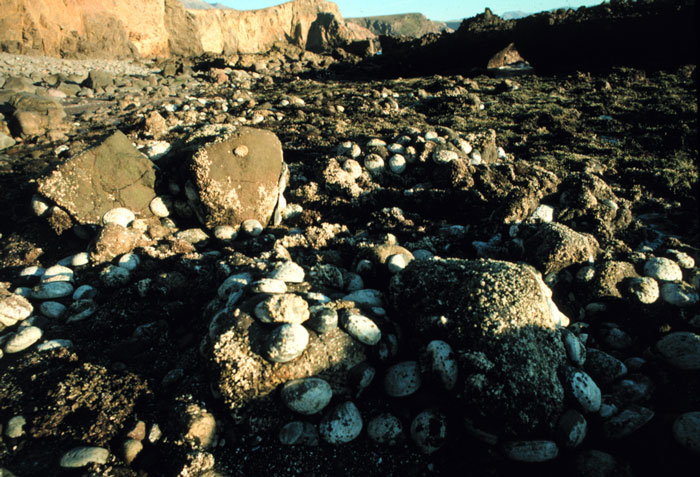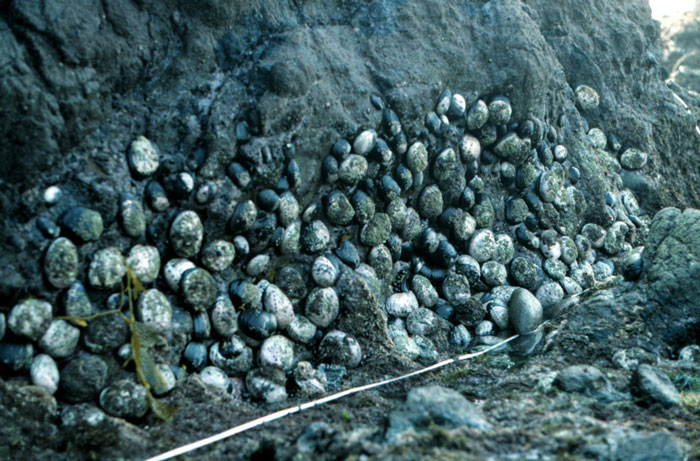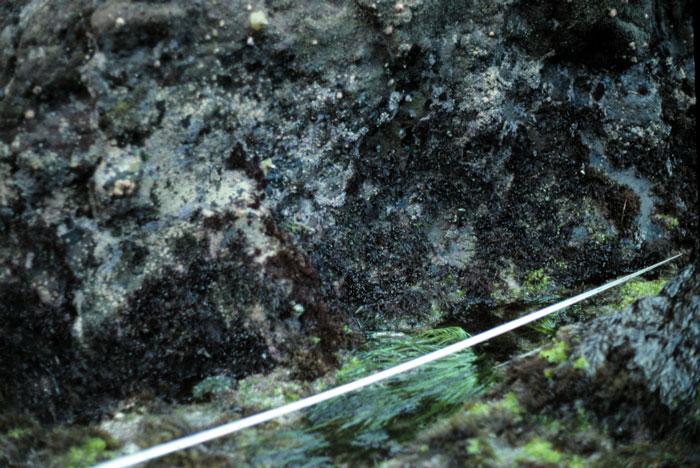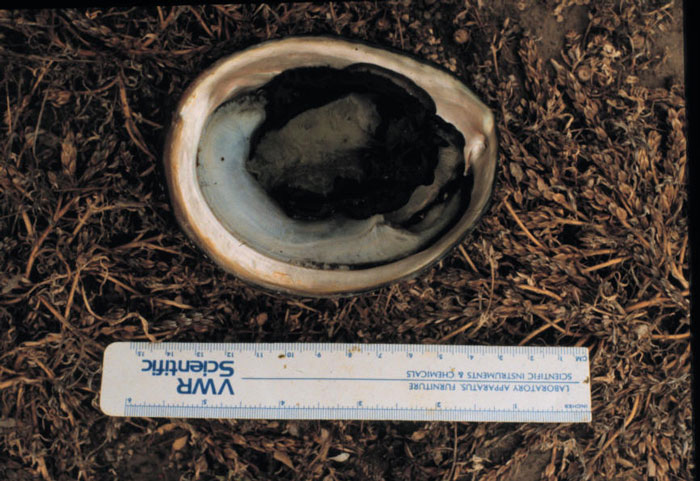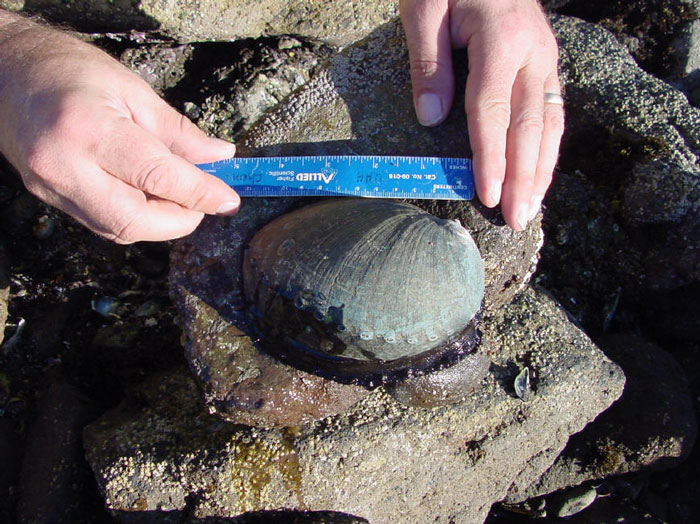Abalone Research Projects
(1) Ecology, Conservation and Recovery of Black Abalone in California
Principle Investigator: Brian Tissot
Collaborators:
Tenera Environmental
California Dept. Fish & Game
National Park Service
NOAA Protected Species Program
Funding:
Lerner-Gray Fund for Marine Research
Hawaiian Malacological Society
Pacific Gas & Electric Company
Dept. of Zoology, Oregon State University
OSU Hatfield Marine Science Center Reynolds Scholarship
Sigma Xi
I have been involved in long-term monitoring of black abalone populations in California since 1982. Early work was focused on the biology and ecology of abalone. More recent studies have examined the conservation of diminishing stocks and population dynamics of the remaining population.
Publications:
Tissot, B. N. 1988. Morphological variation along intertidal gradients in a population of black abalone Haliotis cracherodii Leach 1814. J. Exp. Mar. Biol. Ecol. 117: 71-90.
Tissot, B. N. 1988. Multivariate Analysis. Chapter 3 In: M. McKinney, ed. Heterochrony In Evolution: A Multidisciplinary Approach. Plenum Press, New York.
Tissot, B. N. 1990. El Niño responsible for decline of black abalone off southern California. Hawaiian Shell News 38(6): 3-4.
Tissot, B. N. 1992. The effects of water movement on the ecology and evolution of the Haliotidae. Chapter 4 In: S. Shepherd and M. Tegner, eds. Proceedings of the First International Abalone Symposium: Biology, Fisheries, and Culture. La Paz, Mexico. Blackwells Sci. Publ. Ltd., Sydney.
Lubchenco, J. L., S. A. Navarette, B. N. Tissot, and J. C. Castilla. 1993. Possible ecological responses to global climate change: nearshore benthic biota of northeastern Pacific coastal ecosystems. Chapter 12 In: H. A. Mooney, E. R. Fuentes, and B. I. Kronberg. eds. Earth System Responses to Global Change: Contrasts between North and South America. Academic Press, San Diego.
Arnold, J. E. and B. N. Tissot. 1993. Measurement of significant marine paleotemperature variation using black abalone shells from prehistoric middens. Quaternary Research 39: 390-394.
Tissot, B. N. 1995. Recruitment, growth, and survivorship of black abalone on Santa Cruz Island following mass mortality. Southern California Academy of Sciences 94(3): 32-47.
Tissot, B. N. 2004. Long-term population trends in the black abalone, Haliotis cracheroidii, along the eastern pacific coast and implications for future recovery. Technical Report, SW Fisheries Science Center, La Jolla, CA. 38 pp.
Neuman, M. Tissot, B. N. And G. VanBlaricom. 2010. Overall status and threats assessment of black abalone (Haliotis cracherodii Leach, 1814) populations in California. J. Shellfish Res. 29(3): 577-586
Grants:
Long-term data analysis of population of the black abalone (for Endangered Species Act Status Review Committee). 2003-2004. SW Fisheries Science Center, National Marine Fisheries Service, ($24,900).
Restocking black abalone populations on Santa Cruz Island: a model for restoring abalone stocks in California. 1997-98. Pacific Gas and Electric Company (PI: $10,000).
Presentations:
1988. American Society of Zoologists, San Francisco, CA.
1989. First International Abalone Symposium, La Paz, Mexico.
1989. Southern California Academy of Sciences, Thousand Oaks, CA.
1990. Western Society of Naturalists, Monterey, CA.
1991. Western Society of Naturalists, Santa Barbara, CA.
1991. Black Abalone Mortality Workshop, California Sea Grant Cooperative Extension Program, Santa Barbara, CA.
1994. Fourth California Islands Symposium, Santa Barbara, CA.
1994. Western Society of Naturalists, Monterey, CA.
1995. American Malacological Union, Hilo, HI.
1999. Western Society of Naturalists, Portland, OR.
2004. ESA Status Review Advisory Committee, La Jolla, CA
2005. Climate Change Workshop, Marylhurst Univ., Portland, OR.
2006. ESA Status Review Advisory Committee, La Jolla, CA
2006. Abalone and Climate Change,Climate Impacts Group, Univ. Washington, Seattle, WA
(2) Red Abalone Density Estimates
I serve on a Scientific Advisory Committee addressing density estimate methodology for red abalone surveys in California. DFW has requested an independent review of the survey design and the methods currently used to estimate red abalone (Haliotis rufescens) density. Abalone density is used as part of an adapative management approach to inform catch guidelines for the recreational red abalone fishery in northern California, and population goals in southern California, as outlined by the Abalone Recovery and Management Plan. More information on this project can be found on the California Ocean Science Trust website.

